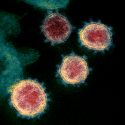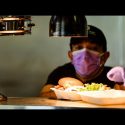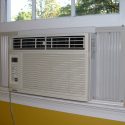COVID questions: Mask filters, workplace air quality, flu shot
Editor’s note: We will be publishing answers to questions about COVID-19 and the pandemic each week in this COVID questions column. If you have a question, please email it to covid19update@uc.wisc.edu.
Q: Do PM 2.5 filters work better than just a coffee filter in your mask to prevent COVID?
A: Probably. But in typical cases I would not expect the addition of a filter to a mask to help much. Filters are often synthetic nonwoven material such as spunbond polypropylene. If the filter has low breathability and covers only a portion of the mask, most of the air inhaled and exhaled will go around the filter rather than through it.
One layer [of fabric] provides some effectiveness. More layers improve the filtration of the material, but reduces breathability. If breathability is low, more flow tends to go around the mask, which is generally bad, so fit becomes more important as the material becomes less breathable. The WHO recommends 3 layers: an internal layer of cotton or similar, a middle layer of a synthetic nonwoven or similar, and an outer layer is polyester or similar.
– Scott Sanders, Professor Mechanical Engineering Department, Electrical and Computer Engineering Department, University of Wisconsin – Madison. Learn more about Sanders’ research of mask materials, construction, fit and filtration and watch his video illustrating the benefits of wearing a good mask.
Q: I’ve recently had a positive COVID 19 test. I plan to get a flu shot. Is there any recommendation of how long I should wait after recovering from COVID to get it? Or does it not matter?
A: If a patient was symptomatic with COVID the CDC recommendation is to wait until they are no longer acutely ill. If a person was asymptomatic they should wait until after the period of isolation (10 days after positive test) to avoid potentially infecting health care workers in the clinic setting.
– David Andes, Professor in the Departments of Medicine and Medical Microbiology and Immunology at UW School of Medicine and Public Health; Head of the Division of Infectious Disease
Q: I have a question regarding indoor air quality at work. We are an essential service provider and while staff are required to mask up when moving about the building- there are still a few cubicles filled with coworkers and occupied offices unmasked at work stations- social distancing is also required. But as we move into colder months, I suggested opening all windows & doors at least 2 times each day for 10-15 minutes to force an air exchange into our building. Could this be beneficial in helping our air quality indoors?
A: The best approaches for mitigating risk for exposure to SARS-CoV-2 in the workplace include proper hand hygiene, wearing a mask at all times when in indoor environments, limiting the time spent in shared occupancy spaces and ensuring that ventilation is adequate for all spaces. Given the wide variability in indoor ventilation systems in workplace environments, it is best to ask the building manager for your space to assess whether ventilation rates are adequate.
In the event that clean air delivery rates are not adequate, facilities should consider the addition of portable, filtration-based air cleaners, improving in-duct filters and/or increasing the number of air changes per hour. Opening exterior windows and interior doors may lead to an increase in clean air in a building, depending on how the HVAC in the building is balanced. However, it is best to first consult your facilities manager to assess current ventilation rates.
– Timothy Bertram, Professor, Chemistry; Affiliate Professor Atmospheric and Oceanic Sciences; Environmental Chemistry and Technology
See more answers to COVID questions at https://news.wisc.edu/tag/covid-questions/. Also, visit our COVID-19 impact site.



